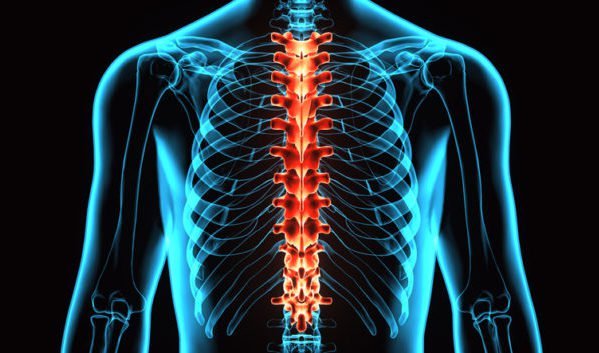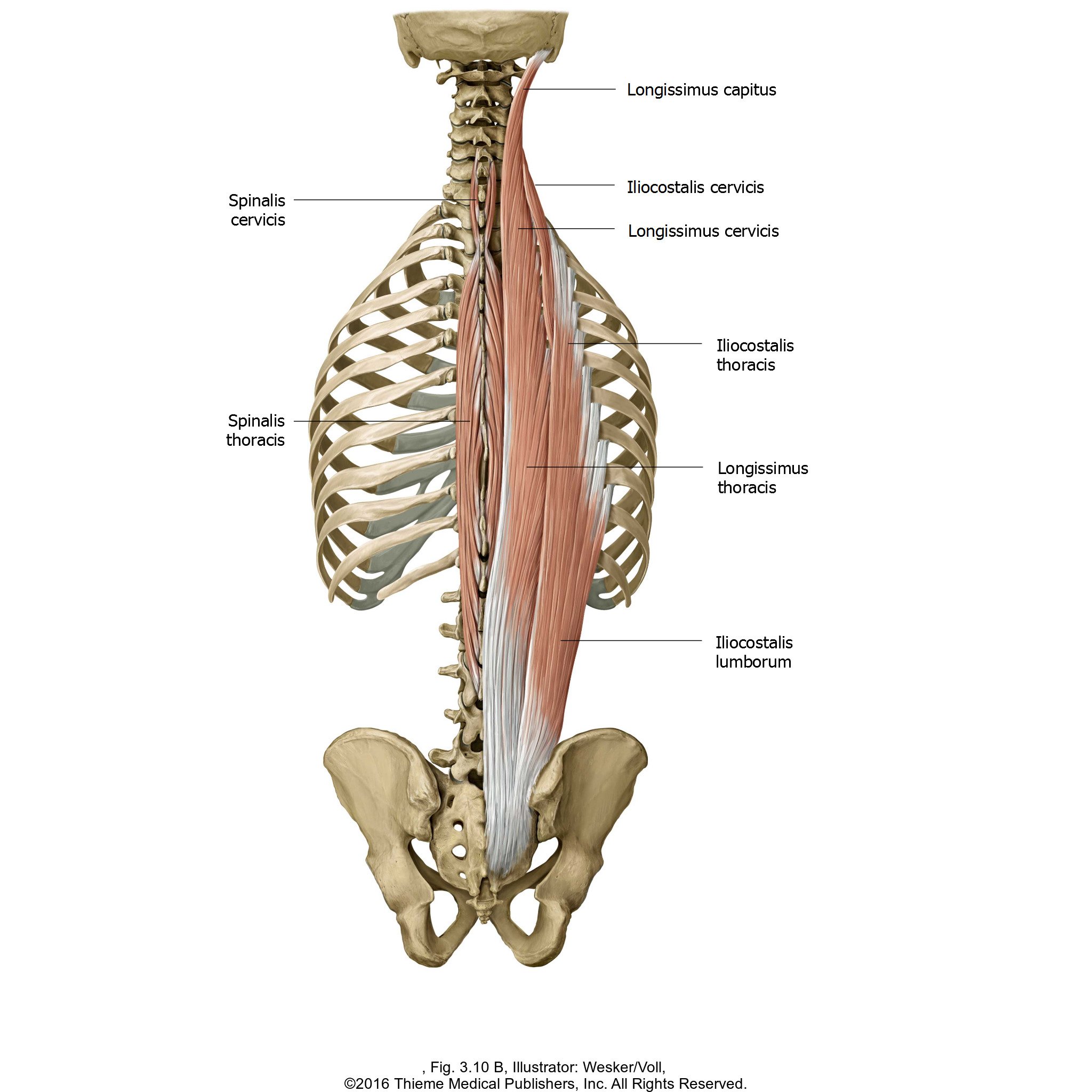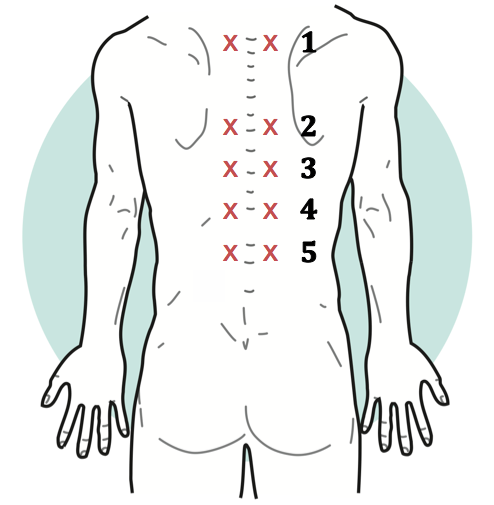Anatomy, Articles, Chinese Medicine, In the Press, Myofascial Release, Resources, Spine, Yoga Medicine® News
5 Steps to Release The Erector Spinae & Balance Organ Function
Erica Yeary for Yoga Medicine® shares some key information on what the erector spinae is, what it does, and how to treat it.

5 Steps to Release The Erector Spinae & Balance Organ Function
The more time I spend studying the anatomy of the human body, the more I am fascinated I am. Both the function of individual systems and how the systems are intricately interconnected are astounding. To dive into both, we are going to look specifically at the function of the erector spinae muscles, how they connect with other systems in Traditional Chinese Medicine, and how to use myofascial release (MFR) techniques to address issues throughout the body.

Erector Spinae
First, let’s get to know the function of the erector spinae muscles. The erector spinae is a group of muscles that extend on each side of the spinal column from the skull to the thoracolumbar fascia in the pelvic region. The three muscles, from medial to lateral, are the spinalis, logissimus, and iliocostalis. These are powerful, movement-oriented muscles that create bilateral extension of the spine and unilateral rotation and/or lateral flexion. Without the strength of the erectors, we would not be able to stand up straight.
While strength in this muscle is imperative, many people can have overly tight erector spinae muscles and present with lower cross syndrome, which is a condition where the lumbar spine is overly curved with an anterior pelvic tilt and hyperlordosis. As a result, many people could benefit from utilizing MFR techniques on this group of muscles. But what if you feel along the sides of your spine and the muscles don’t feel tight or tender? You could still benefit from MFR because of the interconnected communication between these muscles and other systems of the body.
Much like our physical hips are related to our “emotional junk drawer”, the erector muscles are more than just physical movers of the spine. Specific points along the erectors are direct links to major systems of the body, as explained in Traditional Chinese Medicine. The following steps explain how to use tennis balls or MFR balls to not only release the muscles themselves, but also aid in the function of specific internal organs. As a general rule of thumb, stay at each step between 30 seconds and 2 minutes for the full effects to settle in.

Step 1
Place two balls that are touching at the center of your mat. Lay down on your back on top of the balls so that they are on either side of the spine (not on top of the spine itself) at the level of the top of your shoulder blade or T1. The knees can be bent or straight. If the intensity is too much, place a blanket on top of the balls and then lay on top of the blanket. Feel free to move the arms in a manner that is appropriate for you, which could include giving yourself a hug or just letting the arms fall to the sides. This location is known as the UB11 acu-point and it relates to the lungs by spreading and descending Lung Qi in Traditional Chinese Medicine. Stimulating this location can help with coughing or an inability to connect with your breath.
Step 2
Roll the balls down the back until they are at the level of the bottom of the shoulder blade at T7 on either side of the spine. Relax the shoulders down on the ground. Stimulating this location, known as UB17, can invigorate the blood to aid in any blood or cardiovascular related conditions because it is the converging point of blood.
Step 3
Roll the balls down just a little further to T9. If you wear a bra, this is about the level of the horizontal bra strap across the back. Continue to let the entire body be heavy down on the ground with the balls on either side of the spine. This location would be particularly important to address if you consume alcohol on a regular basis because UB18 acu-point is related to the liver and gallbladder.
Step 4
Remain on your back as you roll the balls further down the spine to the base of the ribcage at T11 and T12. This is slightly below the level of the belly button. Continue to breathe deeply and relax the muscles in contact with the balls. For increased intensity, you may bring the knees in toward the chest slowly. Known as the UB20 acu-point, stimulating this location can help with bloating, diarrhea, vomiting, and any spleen conditions because it is related to the spleen and stomach.
Step 5
The final MFR location is at start of the lumbar curve of the spine at L2. Make sure the balls are still touching and on either side of the spine. This location, the UB23, is known to strengthen and balance the kidneys. After 30 seconds to 2 minutes, remove the balls and lay flat on the ground to reflect on any changes you feel.
Quick Tips for MFR
Always look for an area that you can calmly breathe and relax in without pain, sharp and/or shooting sensations. Avoid nerves, bones (in this instance, especially the spine!), visible swelling or bruising, and broken skin. Always consult healthcare provider first as this is not meant to replace medical care.












